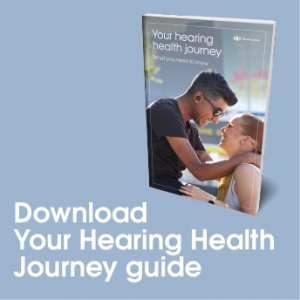
Audiologists refer to hearing going in and out for a few seconds and then coming back as sudden sensorineural hearing loss (SSHL) or sudden deafness. The reference to deafness can confuse some people who might assume it’s a permanent condition. Fortunately, that is usually not the case.
The phenomenom of hearing going in and out can occur suddenly or multiple times over a period of several days. As a result, people tend to assume they have a condition such as earwax buildup or a sinus infection rather than SSHL. This can prevent them from seeking timely treatment.
Statistics on SSHL
Ninety percent of people with hearing fading in and out experience it in only one ear. SSHL affects approximately 5,000 people in the United States each year. Although it has traditionally been most common for people in their 40s and 50s, audiologists are seeing a steady influx of younger patients due to loud noise exposure.
People who seek prompt treatment for SSHL recover their full hearing within two weeks in 85 percent of cases. They typically visit an ear, nose, and throat (ENT) doctor or an audiologist for diagnosis and treatment. Some of the first indications of SSHL include a popping sound in the ear, difficulty hearing out of one ear, dizziness, or ringing in the ear known as tinnitus.
It’s estimated that as many as seventy percent of individuals who experience SSHL also suffer from symptoms of tinnitus. Additionally, fifty percent of them experience vertigo.
Why Does My Hearing Keep Coming and Going?
SSHL can occur for a variety of reasons. Below are some of the most common ones.
Dysfunction of the Eustachian tube
Every person has a small tube in the ear that connecting the middle ear to the nose. This tube is called the Eustachian tube. Under normal circumstances, the Eustachian tube opens and closes to allow equalization of pressure between the space directly behind the eardrum and outside air.
If you’ve ever traveled by airplane, you may have dealt with ear pain caused by rapid air pressure changes. Typically these changes occur when the plane takes off and lands. Consequently, the ear pain is in response to the Eustachian tube working to cope with the sudden and dramatic air pressure changes. The common cold or a sinus infection can also cause the Eustachian tube to feel blocked and affect hearing.

Inner ear diagram showing the location of the Eustachian Tube.
Earwax buildup
Having too much wax in the ears usually has a constant impact on hearing. In some cases, the hearing loss comes and goes. Audiologists and ENTs don’t recommend using Q-tips to clean the ears since it can cause earwax to become longed even deeper in the ear canal. Using an earwax cleaning kit from a drugstore or visiting a doctor for irrigation of the ear should clear up the problem.
Ear infections
Fluid containing viruses and bacteria can build in the middle ear and cause an ear infection. Ear infections are extremely common in children but can affect adults as well. Repeated or severe infections can cause SSHL that usually clears up after successful treatment of the ear infection.
Head injury or trauma
A sudden blow to the head such as what occurs during a car accident or assault can cause a concussion or other injuries that damage hearing. People can experience SSHL when the auditory system and its pathways sustain damage after the injury or trauma. The most commonly affected parts of the ear are the inner ear and middle ear. The inner ear contains a bundle of sensitive nerve cells called the cochlea. Damage to these cells can cause temporary hearing loss, permanent hearing loss, or tinnitus. When the blow to the head strikes the middle or outer ear, conductive hearing loss is the most typical result. Mild to moderate trauma to this area resulting in hearing loss usually resolves within a few months with severe trauma could cause permanent hearing loss.
Loud noise exposure
Attending a concert, working with loud machinery, or living in a neighborhood with heavy traffic are just three examples of loud noise exposure that can cause SSHL. Depending on the sound decibel, a temporary threshold shift can occur in the ear canal after one incident or repeated exposure. The human ear typically recovers from noise exposure on its own and normal hearing gradually returns. Something else could be impacting the ears if full hearing doesn’t return as expected.
Among the causes of SSHL, loud noise exposure is among the most common and is likely the most preventable. Though they are not rated as hearing protection devices, noise-cancelling earbuds such as IQbuds² MAX can help reduce long-term exposure to moderate to high levels of noise.
Meniere’s Disease
Some people with Meniere’s Disease experience fluctuating hearing loss where the hearing in one ear goes in and out over a period of several days. People with this condition should have regular audiology visits for symptom management.
Diagnosing and Treating SSHL
Are you concerned about hearing going in and out in one ear? If so, schedule an appointment with an audiologist or ENT as soon as possible. The medical professional will test for SSHL using a hearing test called pure tone audiometry. These tests will determine if sound is not reaching the middle ear as it should. A pure tone audiometry test can also show the provider the degree of hearing loss.
After a doctor diagnoses SSHL, the next step is to determine the cause and/or underlying medical conditions. Common diagnostic methods include a balance test, blood test, and imaging test such as magnetic resonance imaging (MRI).
Completing a prescription of corticosteroids is the most common treatment for SSHL, particularly when a medical provider cannot diagnose a specific cause. The corticosteroids help to reduce swelling and inflammation in the ear as well and give the body an added immunity boost to fight off illness. Most doctors prescribe corticosteroids in pill form although some have started offering injections more recently. If this fails to restore normal hearing, people suffering from SSHL should return to the same medical provider or request a referral for additional testing.
Those with underlying medical conditions contributing to SSHL will need treatment for that issue at the same time. The most common example is needing antibiotics for an ear infection and corticosteroids to restore hearing. After recovering from SSHL, it’s important to avoid the same triggers. As such, medical professionals advise that individuals of all ages protect their hearing whenever possible.


